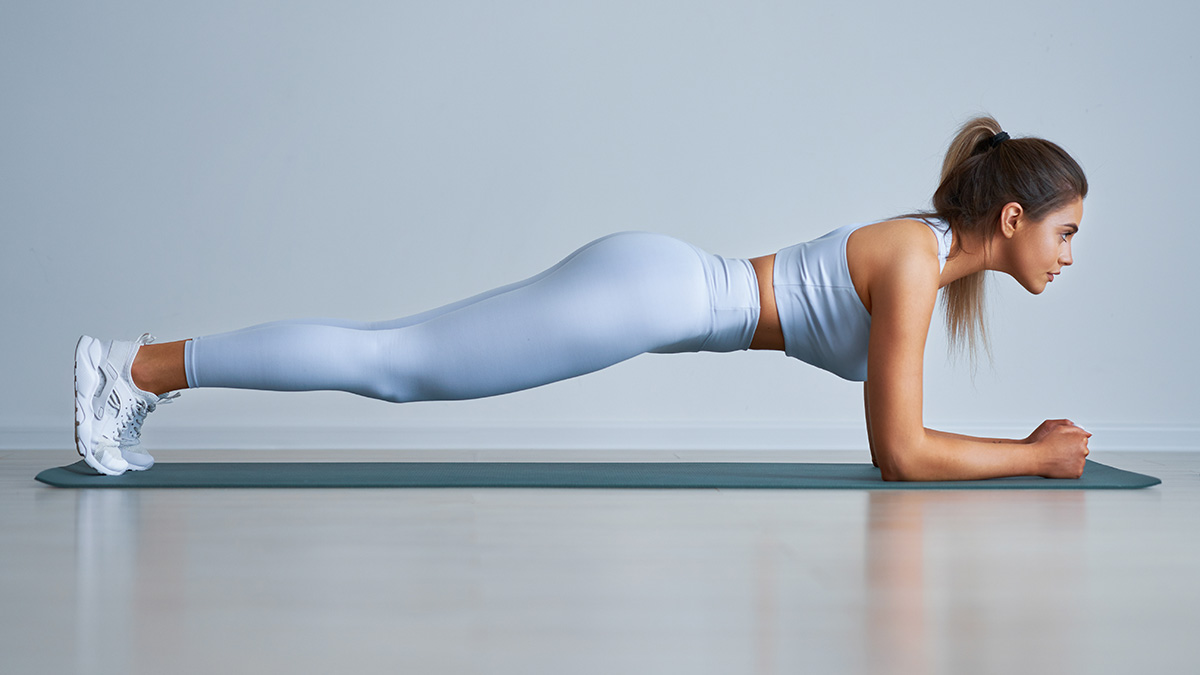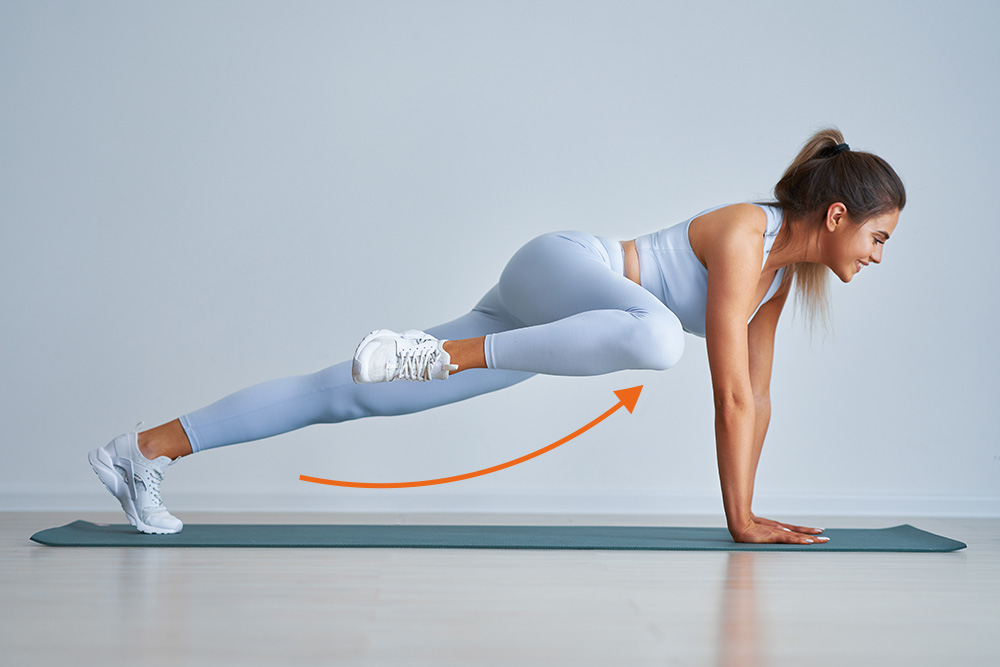Winter sports preparation
To fully enjoy winter sports, it is recommended that you do well prepare physically and maximize your performance to avoid injury and enjoy rather than suffer.
Winter sports, whether it is downhill skiing, cross-country skiing, or snowshoeing, are intense physical activities that require adequate conditioning. To prepare in advance, key is to work on your physical condition to avoid injury, but also on your endurance to get the most out of it.
Physical condition
It is important to work on your overall fitness, not just on the days leading up to a trip to the mountains, but throughout the year to stay fit and healthy.
For winter sports, we will focus on strength training, endurance, and cardio exercises, as well as yoga exercises to improve balance.
Workout
The muscles to target for winter sports are mainly the legs, abdominal muscles, but also the back muscles, as well as the shoulders, biceps and triceps for activities requiring poles such as snowshoeing, cross-country skiing and downhill skiing.
Muscle preparation exercises
Glossary :
- A repetition is a complete movement performed by a joint or muscle group.
- A set is the total number of repetitions performed for an exercise.
As a rule, keep the sets short, 10 to 15 repetitions with a one-to-two-minute break between each set, and increase the number of sets as the training session progresses.
The effort should be felt from the first set. If not, check your posture and/or increase the number of repetitions. To train your muscles it is better to do several sets in a row rather than one set with a high number of repetitions. Never force or rush, perform the repetitions slowly while looking far ahead to keep your back straight. Performing your movements in front of a mirror is not narcissistic, but rather helps to correct poor posture.
Squats & Lunges
Squats (classic and side squats) and lunges are the basic exercises to strengthen the leg muscles. Squats are performed by spreading your legs slightly wider than the space between your shoulders. For side squats, increase the space between your legs so that your supporting leg is bent, while your second leg is straight. Then perform your reps in a way that transfers your support from one leg to the other while maintaining balance. (Video: Squats)

For lunges, perform a full set with one leg and then reverse. There is no need to touch the ground with your knee before coming up. (Video: Lunges)

For all these exercises, get down as low as possible, if you are comfortable, pause before coming back up.
Abdominal & Lumbar
For the abdominal muscles, prefer sheathing exercises such as the plank because it strengthens all the abdominal muscles rather than ’crunches’ because they can put strain on the lumbar vertebrae or the neck if they are not done properly.

Sit on your elbows and toes. The back should be perfectly straight and almost parallel to the floor, keeping the head in line (do not raise or lower your chin). Hold the posture until you feel the effort. Take a break for one to two minutes and then start again.
Ideally, increase the duration as you do each set. (Video: Plank)
It’s better to do a short pose in perfect posture than to force yourself into an unstable posture.

If you are comfortable with the plank and want to add difficulty to this exercise, try the ’spiderman’ variation, which involves bringing the knee up to the side, towards the shoulder. Alternate with the other leg. (Video: Spiderman)

To strengthen your lower back, lie on your belly on a sports/yoga mat, facing the floor, with your arms stretched out in front of you. Lift your arms and legs out of the way (video: Superman). As with the plank, hold the pose until you feel the effort. Take a break for one to two minutes and then start again. The more comfortable you are, the longer you can increase this exercise duration.
A variation of this exercise is to lift one arm and the opposite leg off the ground and then alternate (video: alternating Superman).
Shoulders, Biceps, Triceps
Concerning the upper body muscles, arms, shoulders, the exercises are to be performed with dumbbells (or, alternatively, water bottles as you can adjust their weight).
- Push-ups (or knee push-ups), for the pectorals, triceps and shoulders (videos).
- Arm curls, facing the chest, for the biceps (video).
- Lateral raises, with arms outstretched, for the shoulders (video).
- Triceps extension, this movement is carried out with the legs spaced out and bent, the chest bent forward with the back straight, maintain your arms along the chest and stretch them in turn towards the back (video).

Balance exercises
Some yoga postures such as ’tree’ and ’warriors’ help to improve stability and balance. You can practice by defining a line on the floor and walking with your arms out like a tightrope walker, one foot in front of the other, without ever deviating from your axis (videos: yoga, tree, warriors I & II).

You can also practice holding poses while balancing on one foot. For example, go up in extension for a few seconds on the tip of your foot, then come down and do it again before alternating with the other leg.
Endurance & Cardio exercises
When it comes to improving endurance and cardio fitness, we have to say it once more: it’s essential to do activities like walking, running, cycling, or swimming throughout the year your life.

If you don’t have enough space or time, we recommend two effective exercises:
- the jumping rope;
- the climber: using your hands to support yourself, as if doing push-ups, quickly raise your knees towards your chest while keeping your back straight. (Video: Climber)
After skiing
Winter sports involve a lot of repetitive movements that can cause muscle tension and cramps. Stretching helps to relax the muscles and reduce tension.
It is recommended that you do not stretch immediately after exercise.
Hold each stretch for about 30 seconds. Stretch slowly, never forcefully. Breathe deeply
Poor posture or lack of flexibility can lead to lower back strain. Yoga poses, sphynx and cobra, will help relieve your back. (Videos: Yoga, Sphynx & Cobra)

Practical tips
Helmet
Always wear a helmet because, in addition to protecting your head in the event of a fall, collision or accident, helmets provide very good thermal insulation and ventilation to prevent sweating.
Cold
Use the onion (multi-layer) technique:
- A layer in contact with the skin to keep it dry;
- A second layer to keep the heat in;
- A third layer to insulate against cold and wind.
Avoid cotton and wool if possible as they retain moisture.
Take breaks at regular intervals, ideally in a covered area, to warm up.
Take care and protect your skin
A moisturizing cream will keep your skin moist and prevent chapping.
Use a Vaseline-based cream on areas that are overexposed to cold and wind (nose, cheeks) or on areas of friction.
There’s no need to use up your sun capital for 10 days of tanning, choose a sunscreen with a high protection factor, at least 30, and apply it at least twice a day.
Don’t forget your lip stick.
Nutrition
To help you maximize your performance, consume:
- Proteins because it is essential for muscle recovery, tissue development and rebuilding.
- Carbohydrates as this is the main source for keeping energy levels high during exercise and for recovery after exercise.
- Don’t forget fibers!
During exercise, it is important to provide snacks such as cereal bars.
Hydration
During the effort, don’t forget to hydrate yourself sufficiently, as the cold can deceive the sensation of thirst.
Choose bottles rather than ’hydration backpacks’ because the hoses and tips tend to freeze.
But be careful: even if alcohol causes a feeling of warmth after the first sip, it slowly promotes a cooling of the body. In addition, alcohol will affect your coordination, reaction time, balance and reflexes, which can lead to falls and injuries. Alcohol also reduces your ability to recover by disrupting your fluid balance, which can lead to muscle cramps and pain.
To conclude
Winter sports are above all a leisure activity and not a competition. Enjoy yourself and always stay in control of your speed. Do not strive for physical performance and surpassing yourself at all costs because that is how injuries happen. Take advantage of the fresh air and landscapes to get away from it all.
Videos
Playlist including all the above mentioned exercises.
Individual exercises
Sheathing:
Musculation :
Cardio :
Yoga :
— Bonus —
